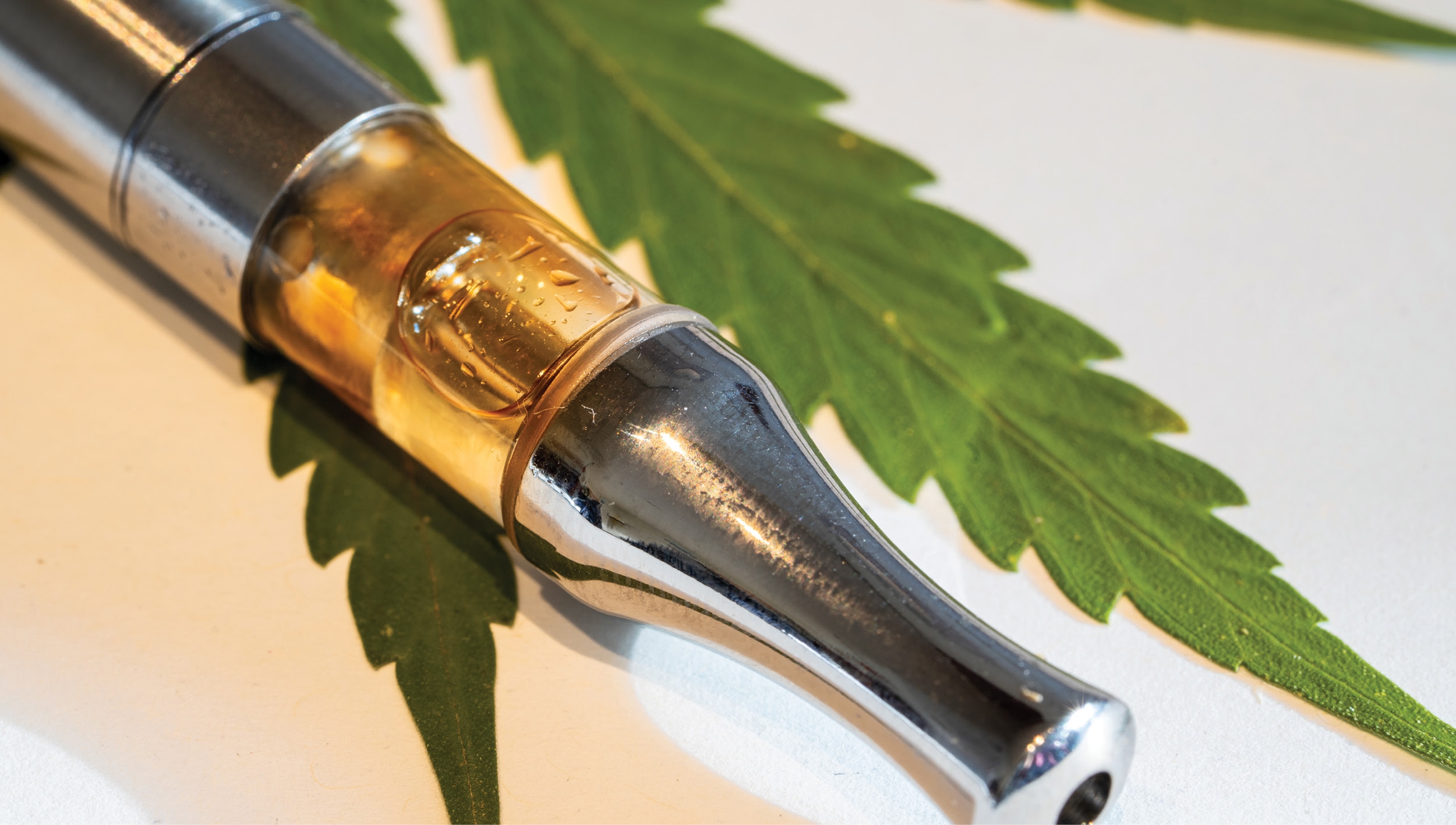The modern smoker is faced with two primary options: Vape or flower.
Both involve heat and inhaling some form of smoke, and both will get you high, but the experience is hardly the same.
If you have no clue what we’re talking about: You know the stinky, rolled-up joints your neighbor smokes on the porch? That’s flower. You know the shiny pen-looking thing that your cousin kept taking sips from at Thanksgiving? That’s a vape pen.
The Basics
A typical vape pen set-up has just two parts: The cartridge and the battery. The cartridge contains a tank of cannabis concentrate, plus a heating element and a mouthpiece (which can be plastic, glass or metal). The rechargeable battery simply provides the power and controls the temperature, and you shouldn’t need to replace it for a very long time, if ever.
The Differences
When it comes to the actual science, a large part of the difference here lies in temperature. At relatively low temps, molecules simply vaporize, changing from solid or liquid to aerosol. At higher temps, like when using a lighter on flower, they actually combust/burn, which degrades into additional byproducts.
Of course, everybody is different, and factors like personal tolerance, equipment, pen temperature and more will all have an impact. You can even use hemp wick to light your flower at a much lower temperature, around 300-400F. But some things hold true: I have yet to meet a vape pen that comes anywhere near being as pungent as flower always is.
The Experience
Simply by nature of combustion, smoking burns off more THC and introduces more byproducts than vaping, even when all else is held equal. And yet, many consumers (myself included) report feeling not only a different high from flower, but a better one.
I’d argue this is in part due to the entourage effect, meaning that flower is chock full of terpenes and other cannabinoids that work in tandem with THC. But high quality vapes, especially “live resin” cartridges, do retain the entourage effect. Biology suggests another possibility: Smoke has higher levels of carbon monoxide, which outcompetes for oxygen to body tissue, and that lack of oxygen can make you feel more high.
If you get a vape pen with multiple temperatures (well, it’s actually voltage, but that impacts temp), you’ll quickly notice a difference between the settings. A low burn means less smoke, more terpenes, more flavor, and a less intense high. Turn it up and you’ll vaporize more terpenes away and go through your cartridge faster, but get a bolder smoke. Up to you!
The Health
Thanks to its continued classification as a Schedule I drug at the federal level, research on cannabis has been scant and is only just now catching up, so we don’t think it’s a great idea to make definitive health claims on smoking vs. vaping just yet.
What we will say is that the byproducts from combustion contain carcinogens (though much, much less so than tobacco), and we’ll also mention the big vape scare of a few years ago, when additives in vape cartridges were causing lung problems. It’s important to note those were illicit cartridges, not the highly regulated and tested market we have in Michigan today. Plus, vaporizers drastically limit secondhand smoke.
The Other Option
While we typically mean cannabis concentrate cartridges when we talk about vapes, there is another form: Dry herb vaporizers. In other words, you can vaporize flower!
Products like the PAX Plus are also pen-shaped but a bit thicker, and have a small area to pack flower, which is then vaporized relatively slowly to avoid combustion and harsh smoke while still providing a high. You get the convenience and purity of vaping with all the benefits of flower.
The downside? They heat up slower than a cartridge, of course, and a relatively small capacity means you find yourself having to clean out and “repack” the vape more frequently. As far as smell, they land somewhere in the middle.
The End
RAIR, Ascend, Love Supreme, Indigrow—there are quite a few places in West Michigan that make their own high-quality vape cartridges and would be happy to give suggestions and walk you through the basics like a classic “cart” versus live resin. Speak to your local budtender today!






